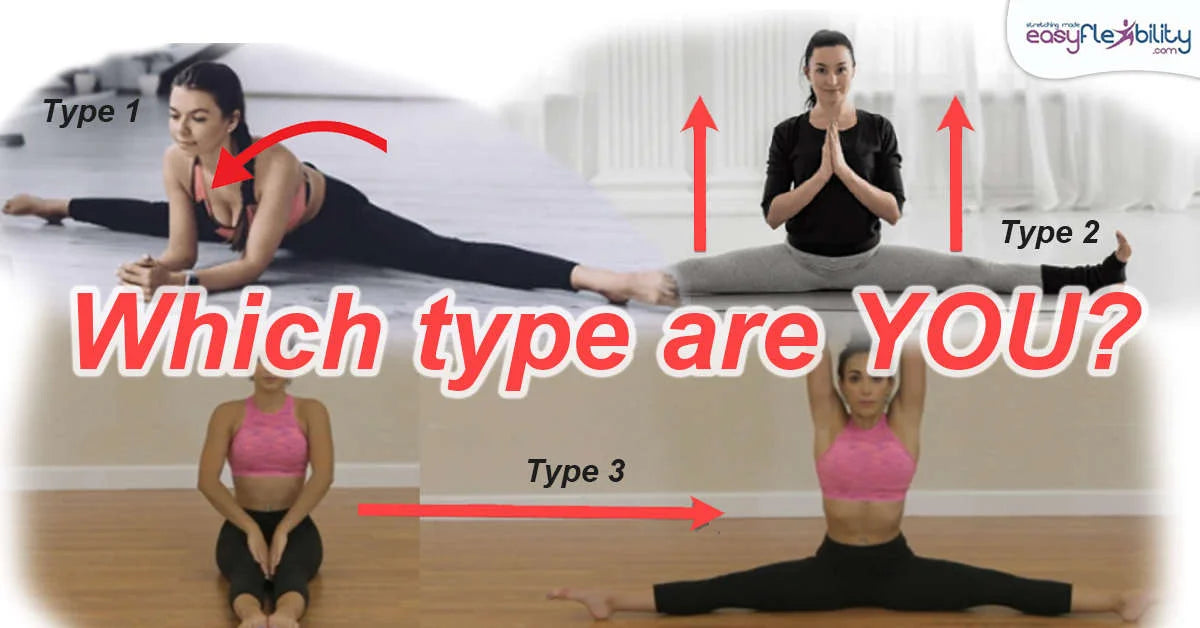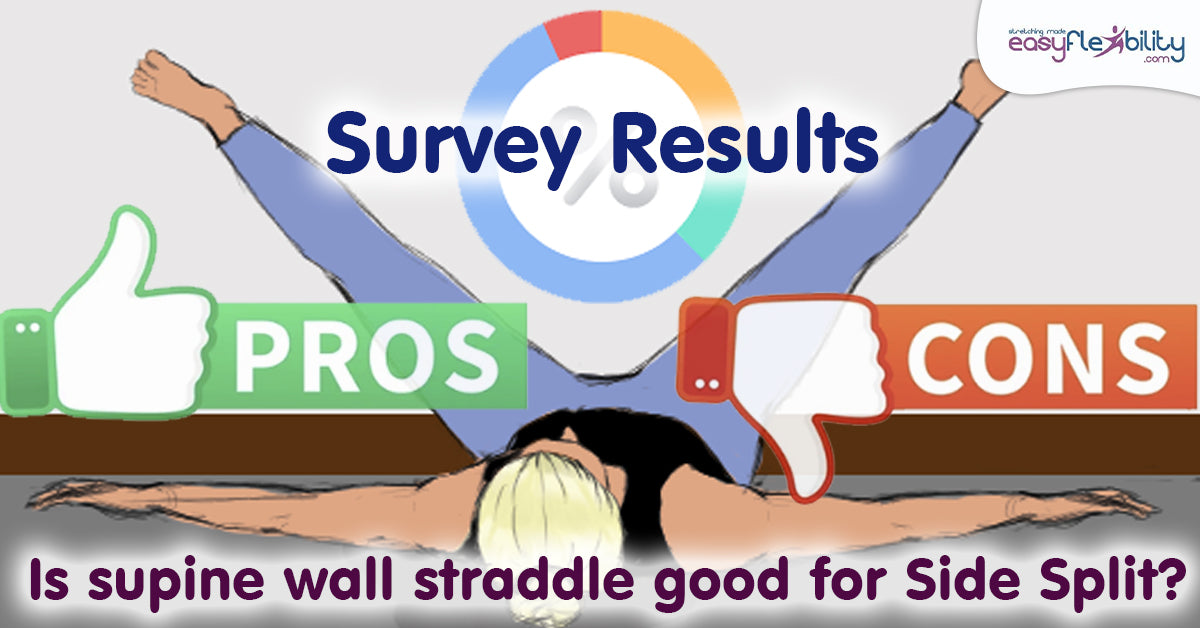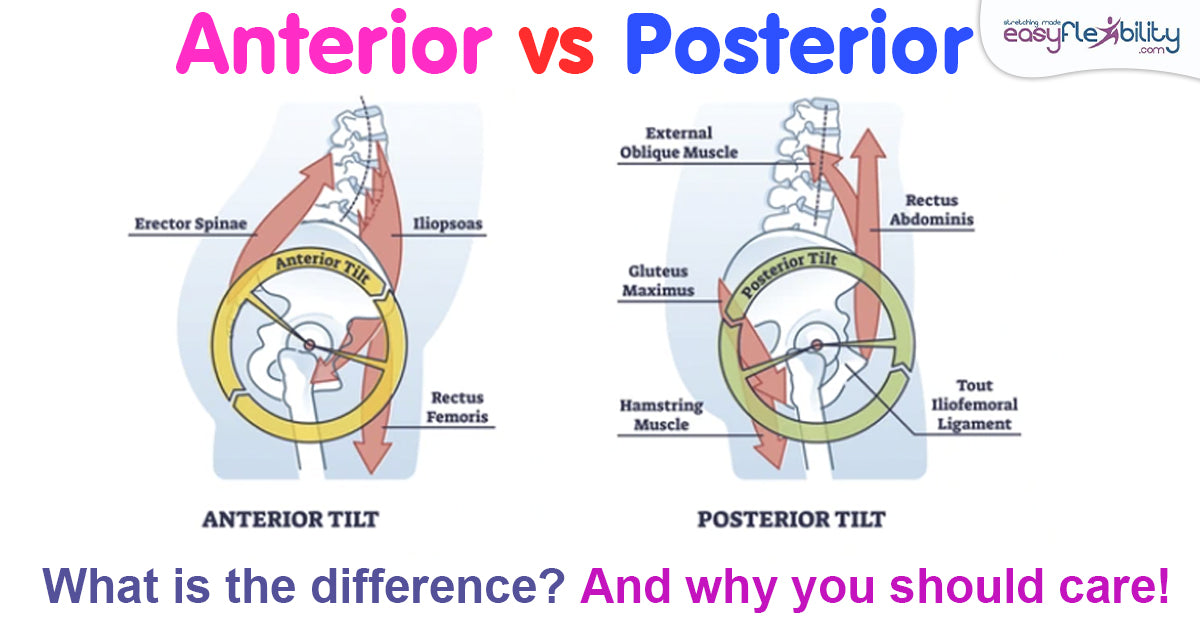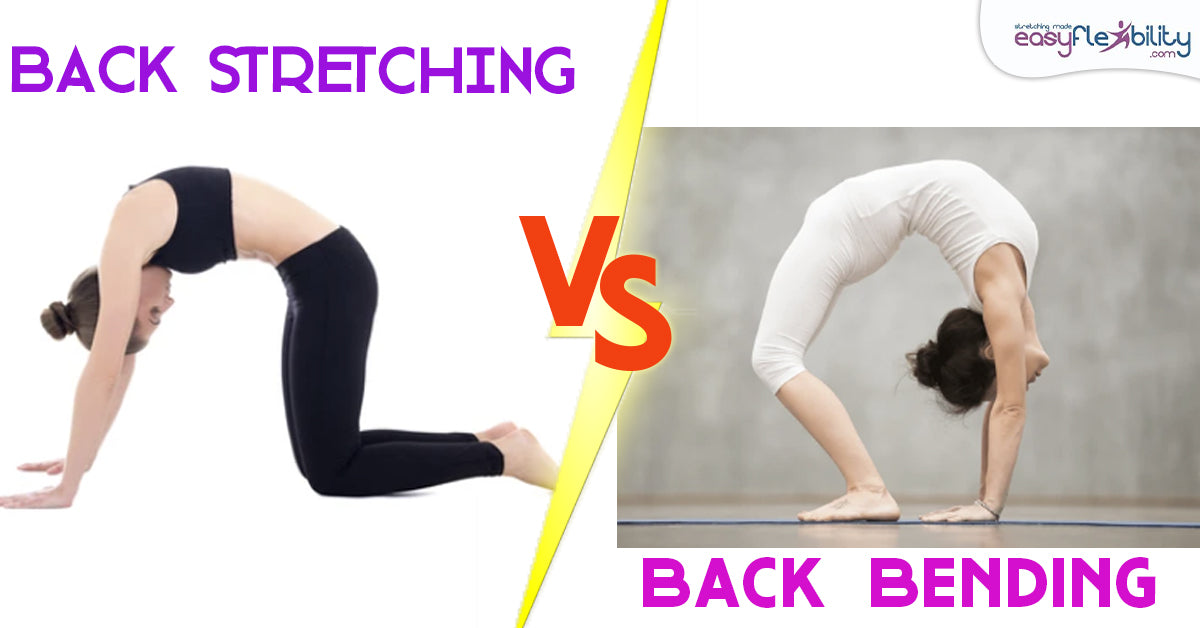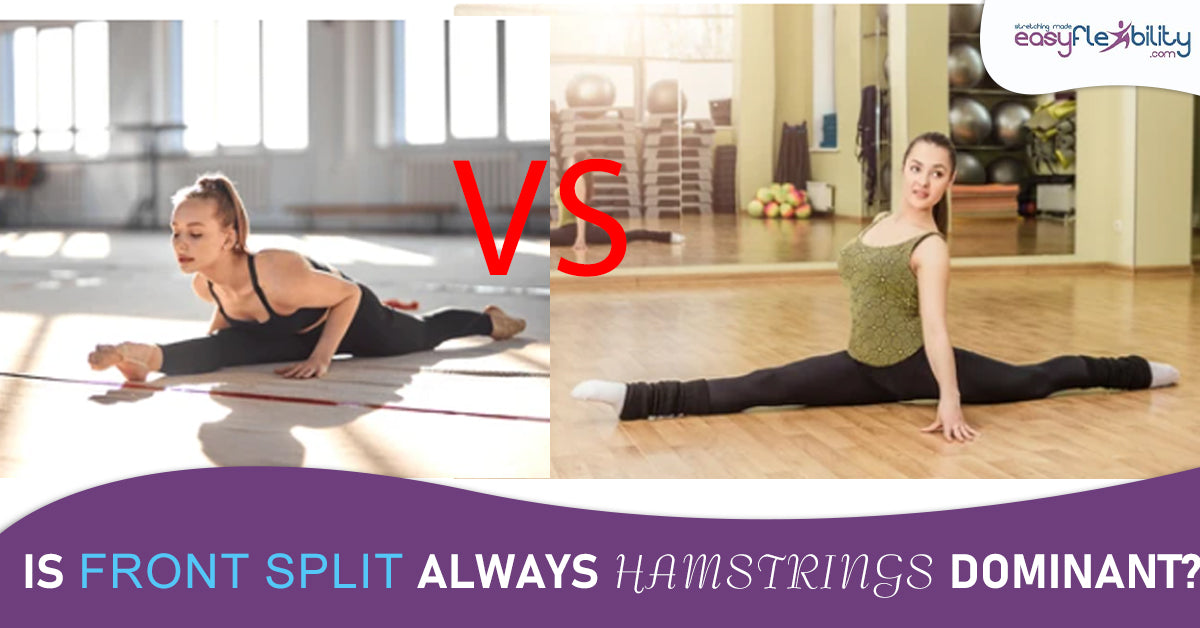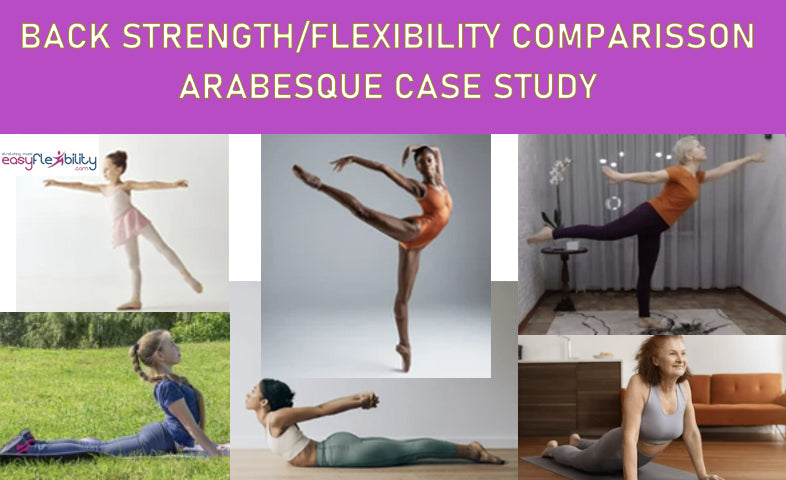The 3 Most Effective Exercises for Developing Hip Internal and External Rotation
Posted by Paul Zaichik on
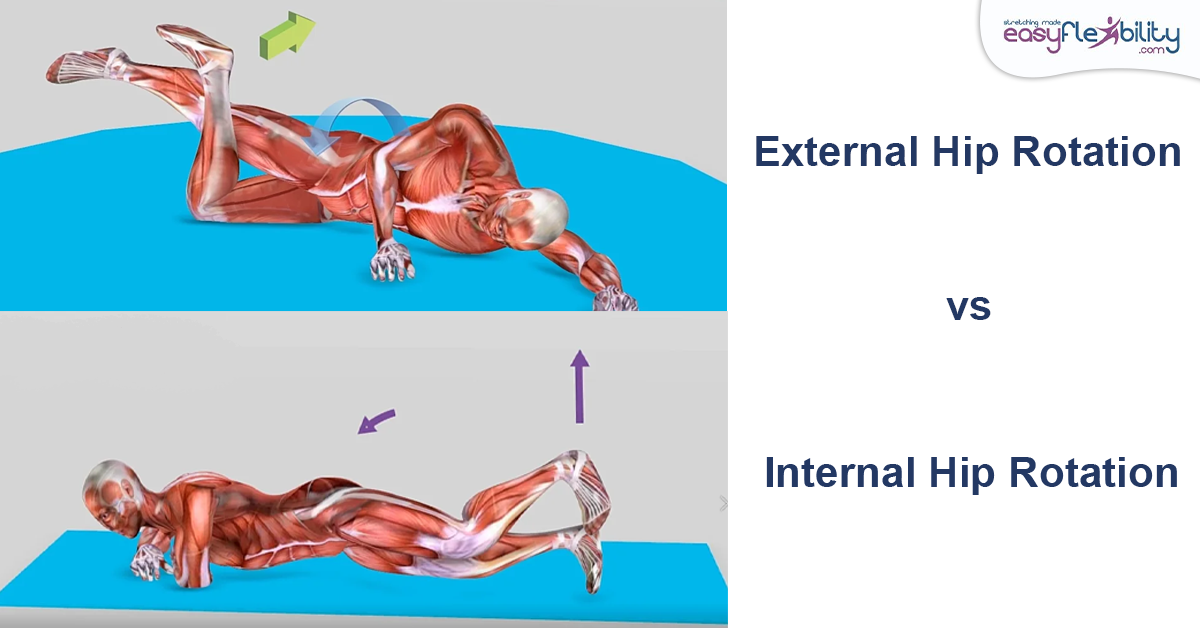
The 3 Most Effective Types of Exercises for Developing Hip Internal and External Rotation
Step by Step Guide on How to Improve Your Hip Internal and Hip External Rotation

Hip rotation, external and internal hip rotation exercises: The Flexibility exercises, the Mobility exercises and the Strength exercises.
Hip rotation can take place in:
- An anatomical position
- In flexed hip position
- In abducted hip position
- And of course, any position in between these three.
You will see hip extension in adducted hip position and in the extended hip position also, but not as often.
Muscles utilized to rotate the hip are not exactly the same in every position.
Some muscles play a bigger role when a hip is flexed. Other muscles play a bigger role when the hip is extended or abducted. And in some cases, such as the case of the piriformis muscle, in standing position piriformis is a lateral or outward rotator of the hip, but becomes a medial rotator of the hip in the flexed hip position.
Internal and external hip rotation, also called medial and lateral hip rotation, is a very important component of sports and human movement in general. While in some sports such as in Martial Arts or Dance, hip rotation is well understood and practiced very often, in other sports and activities hip rotation is not specifically focused on. Although it is important and can benefit athletes and regular people alike.
Some muscles play a bigger role when a hip is flexed. Other muscles play a bigger role when the hip is extended or abducted. And in some cases, such as the case of the piriformis muscle, in standing position piriformis is a lateral or outward rotator of the hip, but becomes a medial rotator of the hip in the flexed hip position.
Internal and external hip rotation, also called medial and lateral hip rotation, is a very important component of sports and human movement in general. While in some sports such as in Martial Arts or Dance, hip rotation is well understood and practiced very often, in other sports and activities hip rotation is not specifically focused on. Although it is important and can benefit athletes and regular people alike.

Internal vs. External Hip Rotation
Hip Rotation rotation is easy to understand when the leg is straight.
- The external rotation is when the leg is turned out. From a standing position, toes point out to the side.
- The internal rotation is when the toes rotate in and the kneecap rotates and points towards the opposite side of the body.
The hip rotation, both internal and external, can get a little bit confusing with the knee bent.
For example, if you were standing and you were to bend your knee and you would do an internal rotation. While your quadricep will turn towards the opposite side of the body, your foot will turn to the outside. Because the foot moves to the outside, some people confuse this rotation as being an external rotation but, this is an internal rotation.
Rotational movements in most sports activities or daily activities will be combined with other actions of the hip. Such as flexion of the hip, extension of the hip, horizontal flexion or extension of the hip and adduction and abduction of the hip. In most cases, it's very rare to see rotation without any other action of the hip.
3 Types of exercises are needed to improve your Internal and External Hip Rotation:
To improve your internal and external rotation three types of exercises are needed. They are:
- Flexibility exercises
- Mobility or range of motion exercises
- And strength exercises.
Below you will see a demonstration of the unique flexibility exercises, then mobility exercises, and finally the strength exercises for internal and external rotation of the hip. If you're interested in which muscles rotate the hip, you can read the short description below. If you're not interested in the kinesiology of the hip rotation, then you can skip the paragraph below.
Kinesiology of Hip Rotation (Muscles involved in rotation of the hip)
Every muscle of the hip will have some kind of involvement in the hip rotation. Some muscles would be stronger rotators and some would be weaker or secondary rotators. But every muscle has some kind of rotational component to its line of pull. Whether the muscles will rotate the hip in or they will rotate the hip out.
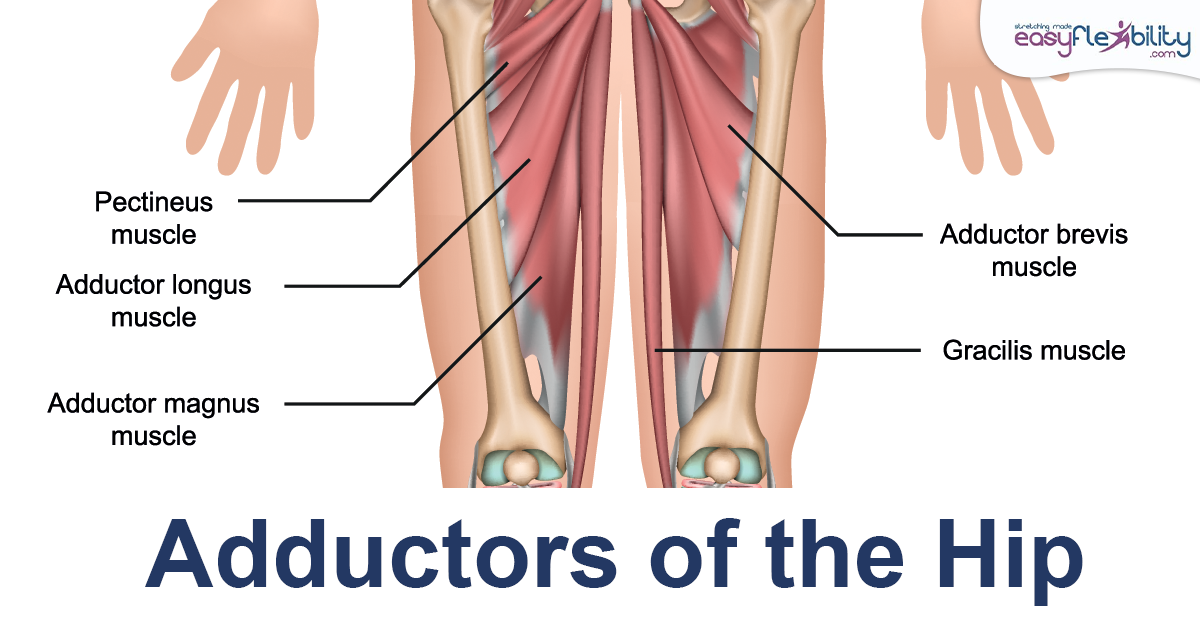
Adductors of the Hip
There are four adductors. They are:
- Adductor Magnus
- Adductor Longus
- Adductor Brevis
- Gracilis
In most cases, all the four adductors: Adductor magnus, longus, brevis and Gracilis are medial rotators of the hip. There are exceptions, but in most cases they are medial rotators of the hip.
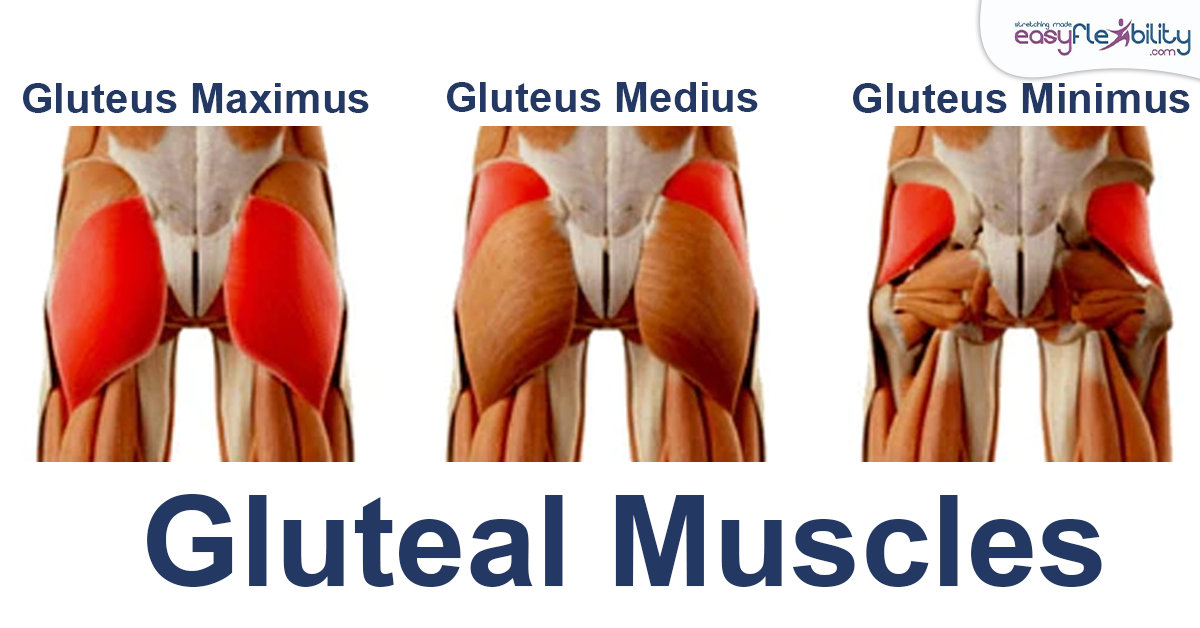
Gluteal Muscles
There are three gluteal muscles. They are:
- Gluteus Maximus
- Gluteus Medius
- Gluteus Minimus
Gluteal muscles can be lateral or medial rotators of the hip. Sometimes one muscle can do both, depending on the fibers that have been stretched. For example, gluteus maximus is usually a lateral rotator. But some fibers can do medial rotation. Gluteus medius is usually a medial rotator, but some fibers can do lateral rotation and Gluteus minimus is generally accepted as a medial rotator of the hip.

Deep Six Lateral Rotators of the Hip
There are six lateral rotators of the hip known as the Deep Six. They are:
- Piriformis
- Obturator Internus
- Obturator Externus
- Gemellus Superior
- Gemellus Inferior
- Quadratus Femoris
The deep six lateral rotators, as the name implies, are the outside rotators of the hip. They rotate the hip outward. And even there we have an exception. For example with a flexed hip Piriformis becomes a medial rotator. But in a standing position, piriformis is a lateral rotator. The other five lateral rotators, Obturator internus, Obturator externus, Gemellus superior, Gemellus inferior and Quadratus femoris are accepted as lateral rotators in any position.

The Hamstrings Muscles
There are three hamstrings muscles. They are:
- Biceps Femoris
- Semitendinosus
- Semimembranosus
The hamstring muscles Rotate the hip outward or inward. The lateral hamstring, the Biceps Femoris long head rotates outward and Semitendinosus and Semimembranosus will rotate inward. They're not the strongest rotators, but they do participate in the medial and lateral or inside and outside rotation of the hip.
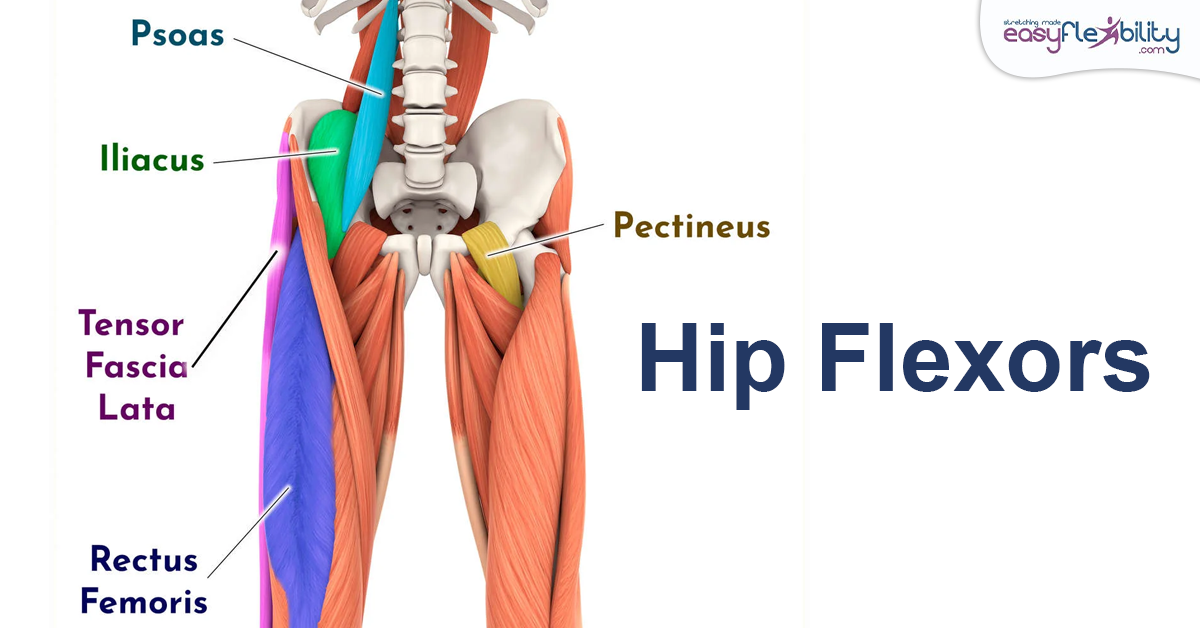
The Hip Flexors
There are six hip flexors. They are:
- Pectineus
- Tensor Fasciae Latae
- Rectos Femoris
- Sartorius
- Soleus
- Iliacus
And finally, we have the six hip flexors. Pectineus known as a medial rotator. Tensor Fasciae Latae a medial rotator. Rectus Femoris a weak lateral rotator. Sartorius a lateral rotator. And both Soleus and Iliacus assisting in lateral rotation of the hip or outside rotation of the hip.
Zaichik Stretching Techniques - Unique Flexibility Exercises for Internal Hip Rotation & Hip External Rotation
Now let's start with the flexibility exercises. As you have seen there are a lot of muscles involved in the rotation of the hip, and they all do different things. And while you can do passive flexibility exercises, such as PNF etc, to truly target each muscle and find the culprit that may be holding you back from great hip rotation specialized exercises are needed.
In the EasyFlexibility system we isolate muscles because it is the most effective way to stretch the muscles. Below you will see two rotation exercises from the EasyFlexibility system, one for internal rotation of the hip and one for external rotation of the hip. This is completely different than anything you have tried before, unless of course, you are very familiar with the EasyFlexibility system.
In the EasyFlexibility system we isolate muscles because it is the most effective way to stretch the muscles. Below you will see two rotation exercises from the EasyFlexibility system, one for internal rotation of the hip and one for external rotation of the hip. This is completely different than anything you have tried before, unless of course, you are very familiar with the EasyFlexibility system.
Internal Hip Rotation Strength & Flexibility Program
This program will gradually increase your hip internal rotation. A very common practice in is to do forced internal rotation hip stretches.Many of which can be very dangerous and don't have a direct transfer into the kicking skill. There is a much faster and safer approach. This approach targets each of the external hip rotators individually. Addressed one by one, and using Zaichik Stretches, the results come very quickly. At the same time, our program strengthens the internal rotators in key positions, so that a kick can be delivered with minimum effort.
~Confidence~ ZST (Hip Internal Rotation)
The following Zaichik Stretching Technique (ZST) is taken from the EasyFlexibility Internal Hip Rotation program. This ZST works on Internal Hip Rotation. *Note that there are subtitles in the video, to see subtitles click on the cc button on the video itself.
To perform ~Confidence~ ZST:
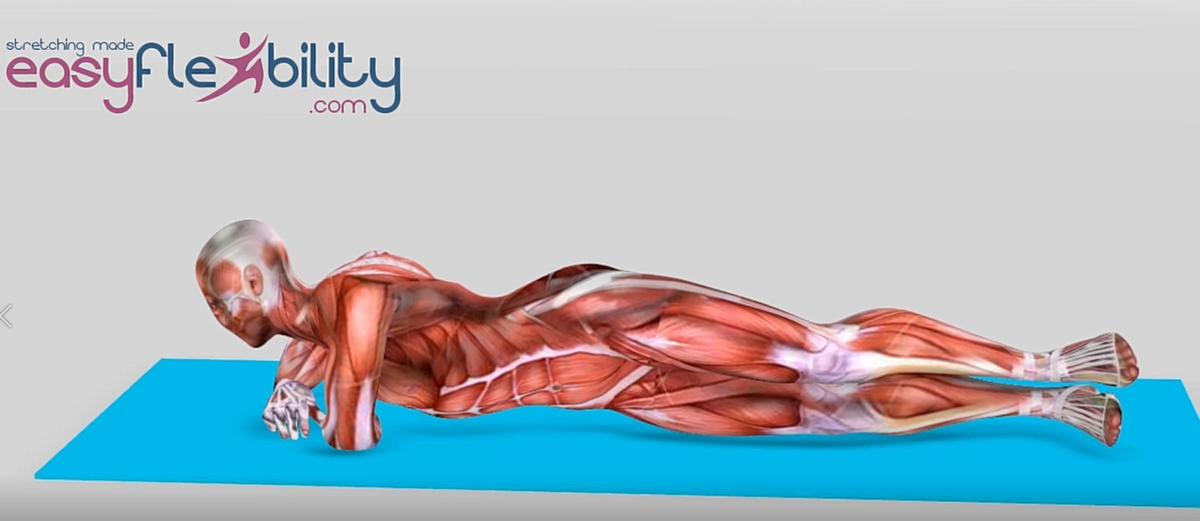
Starting Position
- Lie down on your side.
- Flex your hip
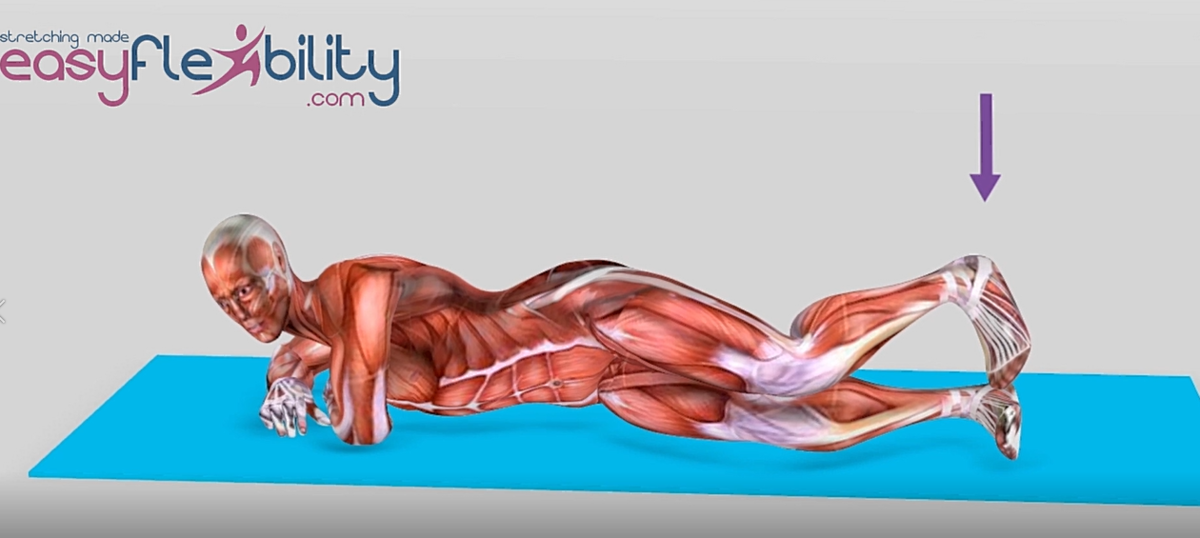
Leverage 1
- Using the top leg press down on the heel of the bottom leg

Target 1
- Roll the top hip closer to the floor while the bottom heel comes up slightly
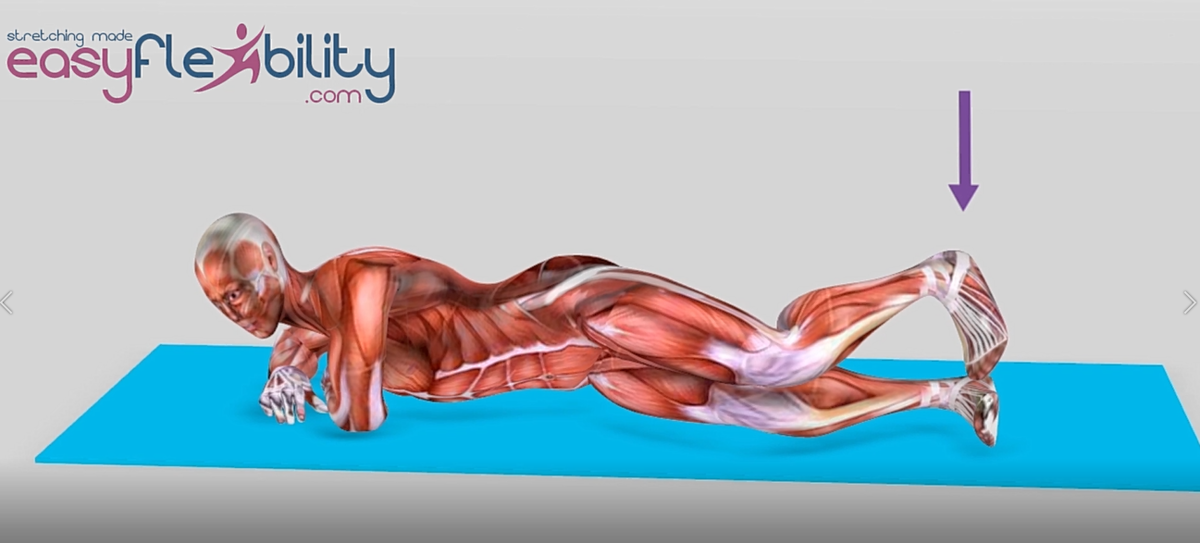
Leverage 2
- Using the top leg press down on the heel of the bottom leg

Target 2
- Roll the top hip closer to the floor while the bottom heel comes up slightly
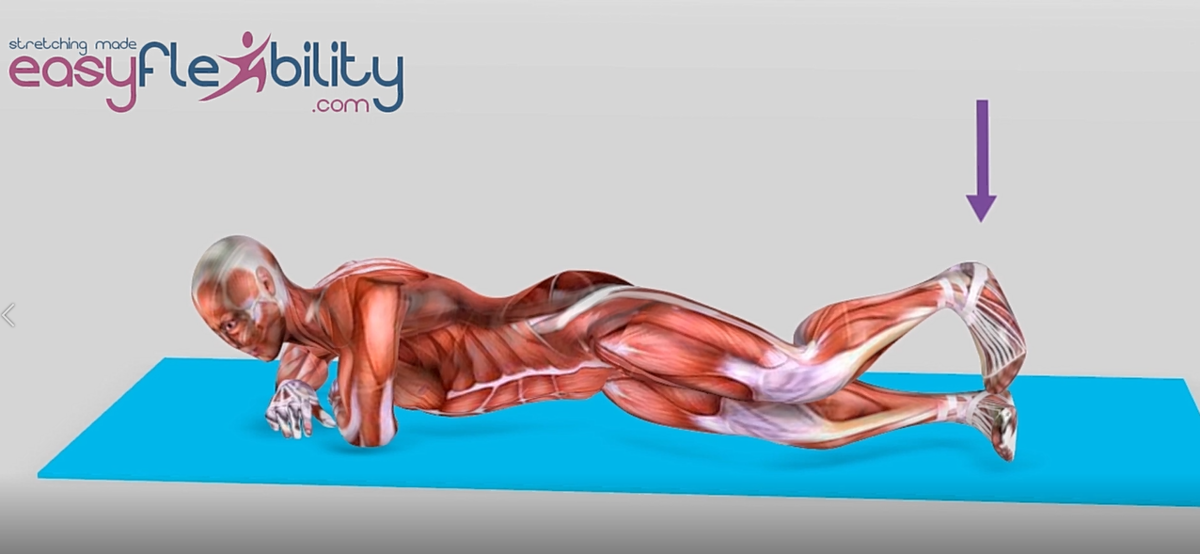
Leverage 3
- Using the top leg press down on the heel of the bottom leg
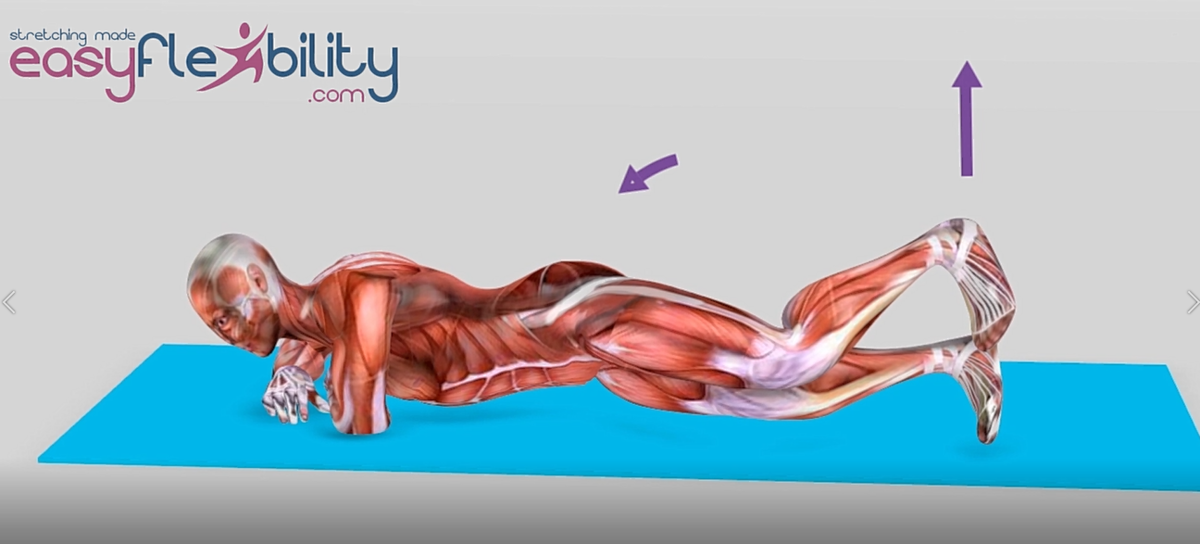
Target 3
- Roll the top hip closer to the floor while the bottom heel comes up slightly
~Fulfillment~ ZST (Hip External Rotation)
The following Zaichik Stretching Technique (ZST) is taken from the EasyFlexibility Hip Turnout Program. This ZST works on External Hip Rotation.
To perform ~Fulfillment~ ZST:
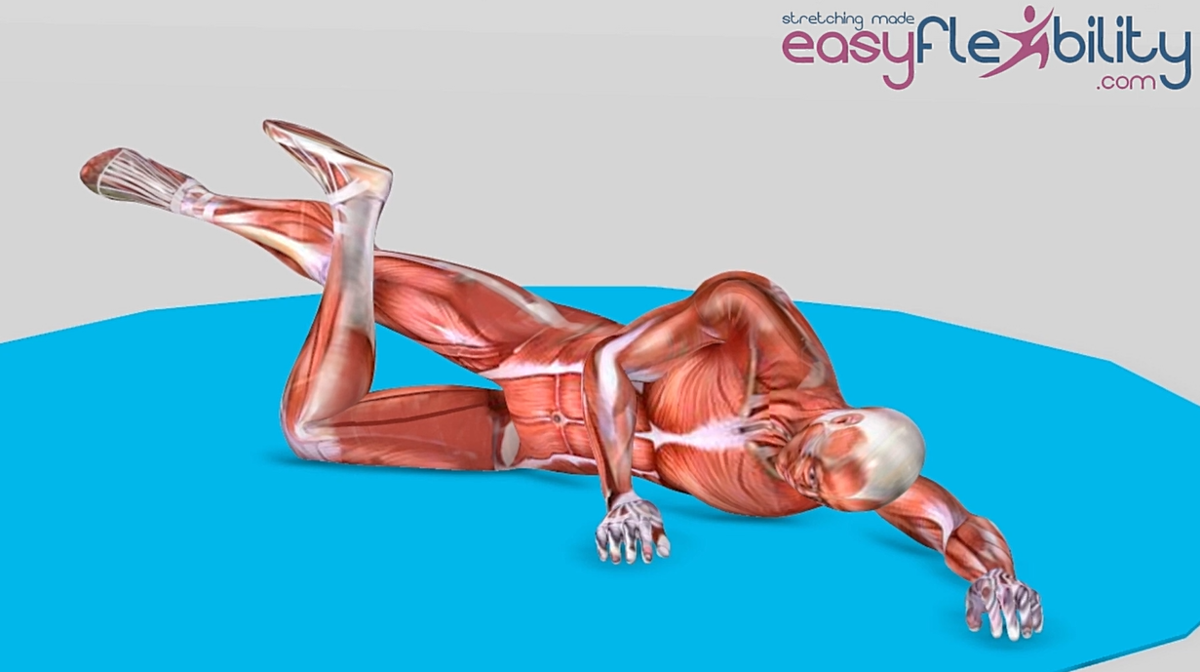
Starting position:
- Lie down on the side.
- Rotate the bottom hip out.
- Flex the bottom knee to about 90 degrees.
- Keep the top leg straight.

Leverage 1
Use the top leg to press the shin forward, while keeping the bottom knee from sliding. This way rotating your bottom hip outward.
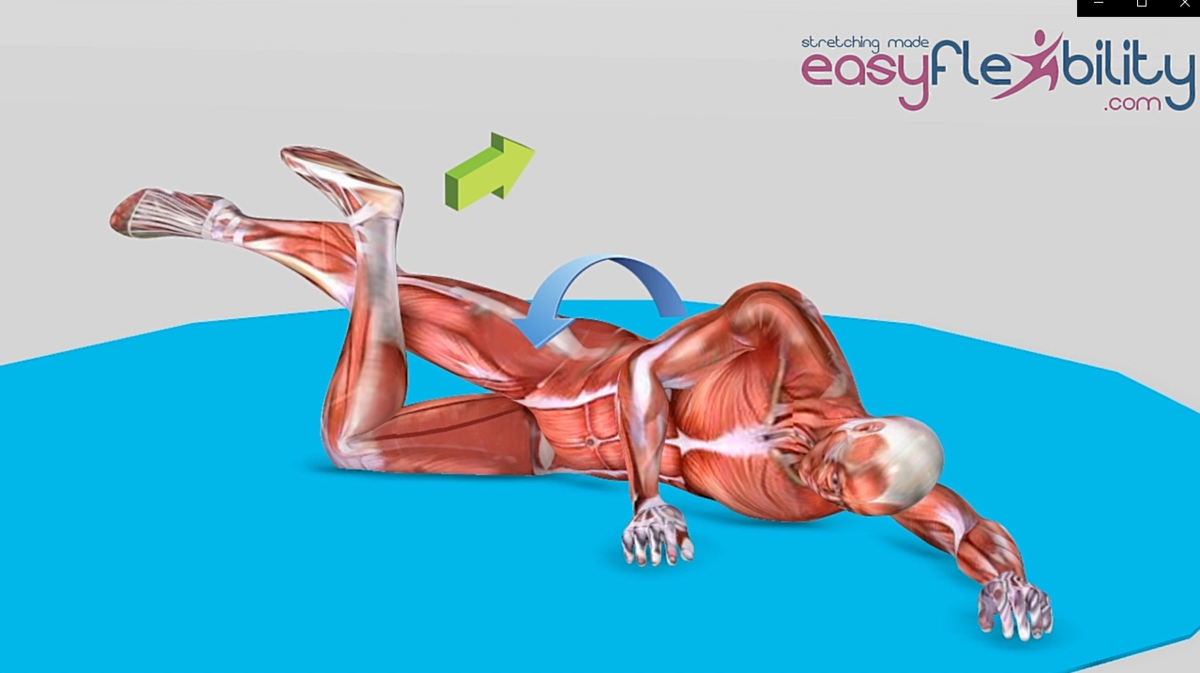
Target 1
As your top leg moves slightly back and the hip rotates slightly inward roll the top hip closer to the floor.

Leverage 2
Use the top leg to press the shin forward, while keeping the bottom knee from sliding. This way rotating your bottom hip outward.

Target 2
As your top leg moves slightly back and the hip rotates slightly inward roll the top hip closer to the floor.

Leverage 3
Use the top leg to press the shin forward, while keeping the bottom knee from sliding. This way rotating your bottom hip outward.
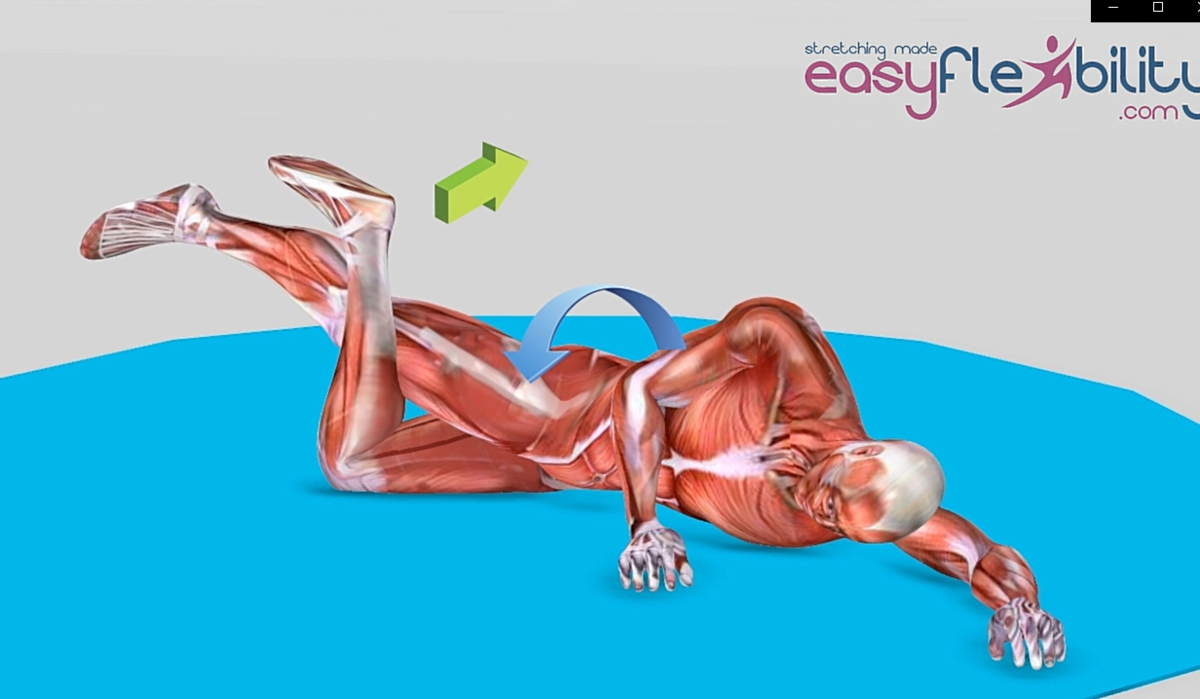
Target 3
As your top leg moves slightly back and the hip rotates slightly inward roll the top hip closer to the floor.
Please note that what we've shared with you is only 2 ZST's from the EasyFlexibility system of over 100 programs. To get full benefit for your hip turnout and internal hip rotation it several ZST's or Zaichik Stretching Techniques to work on all the muscles involved. Here we've shared with you only one ZST for lateral rotation and one ZST for medial rotation. To learn more about the Hip Turnout Program please click here. To learn more about the Internal Hip Rotation Program please click here.
Hip Internal & External Rotation Mobility Exercises
And now let's take a look at the range of motion exercises with lateral medial rotation.
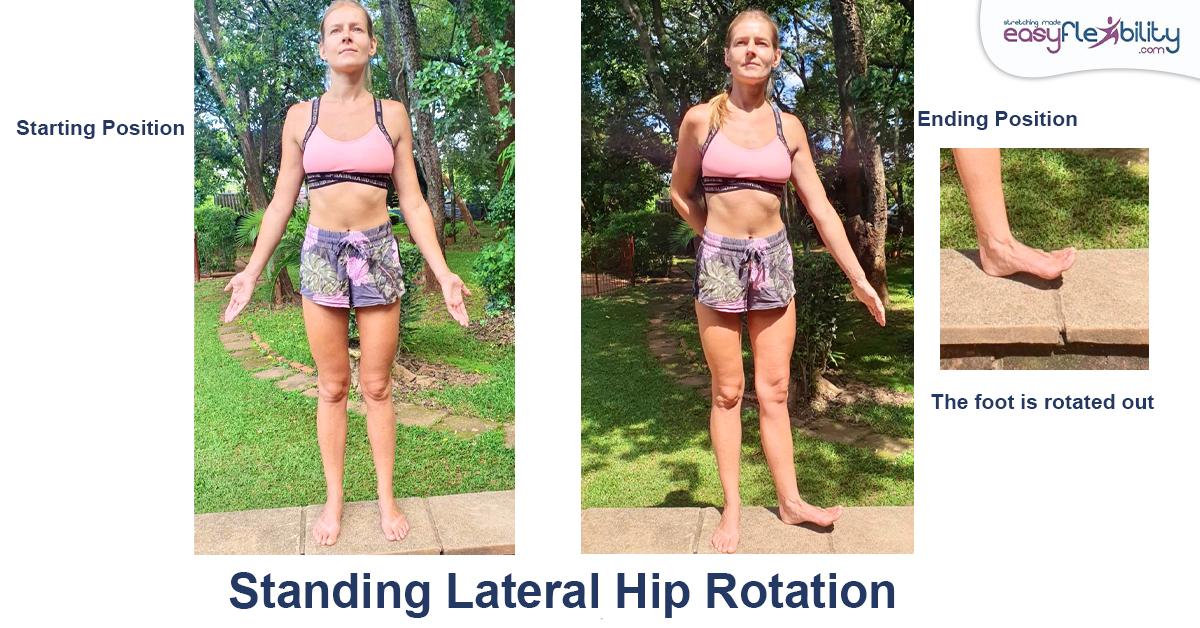
1 Standing Lateral hip rotation
Let's start with the mobility exercises. First in an anatomical position.
- Stand vertical
- Lift your toes (of one leg, either right or left)
- Keep your heels on the floor
- Rotate your leg out by bringing your toes to the outside
- Rotate it back in to starting position
This is a simple lateral hip rotation or outside hip rotation mobility technique.

2 Standing Medial Hip Rotation
- Stand vertical with your feet a foot apart
- Lift your toes
- Keep your heels on the floor and rotate your leg in so that your toes move in the direction of the opposite foot
- Rotate it back out to parallel position
This is a simple medial hip rotation or inward hip rotation mobility technique.
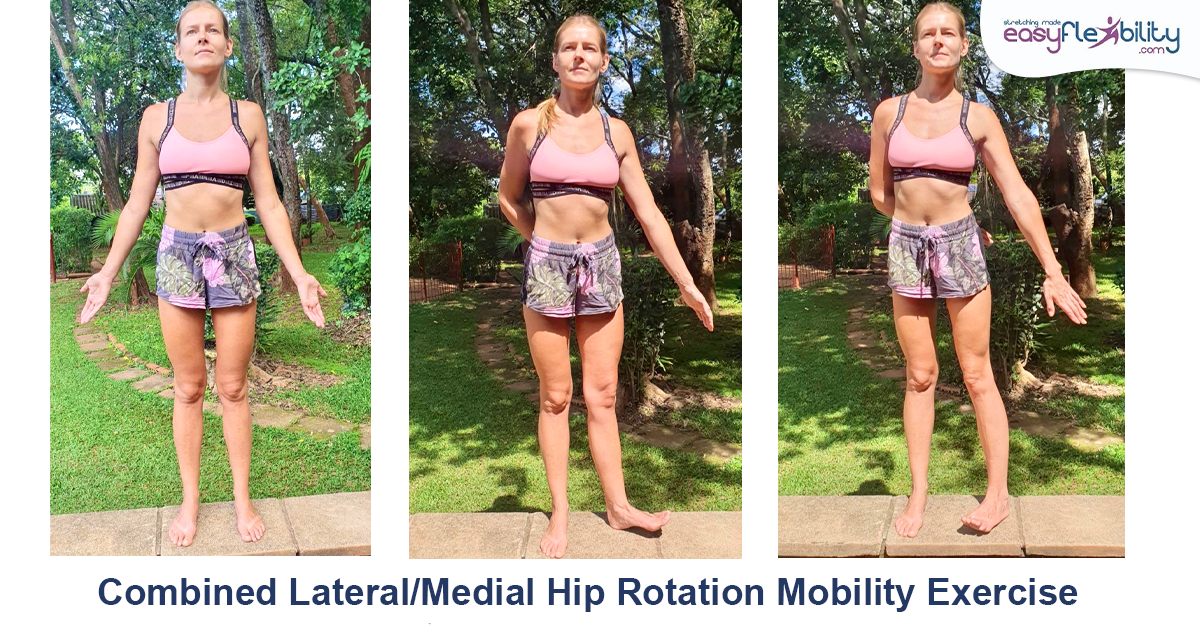
3 Combined Lateral/Medial Hip Rotation Mobility Exercise
You can also combine the two.
- Stand vertical with your feet one foot apart
- Lift your toes
- Keep your heels on the floor and rotate the leg out so that your toes point out to the side
- And then rotate the leg all the way back in
This exercise helps to develop the range of motion, but it also strengthens the muscles that are used for rotation.
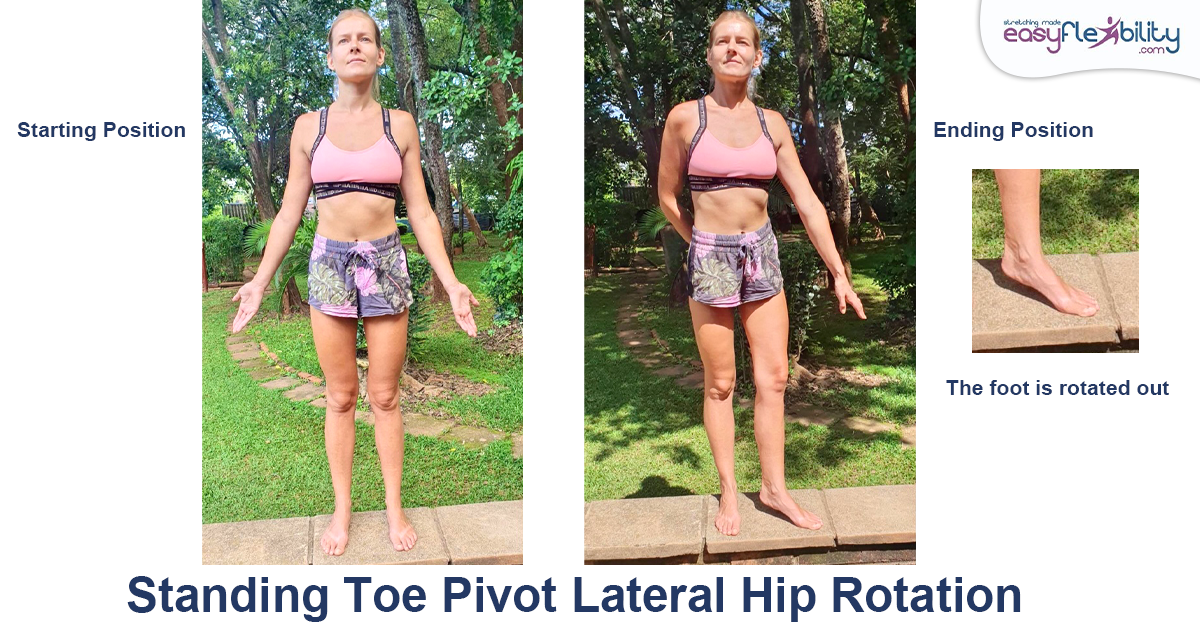
4 Standing Toe Pivot Lateral Hip Rotation
Now you can do invert and outward rotation.
- Stand vertical with your feet a foot apart from each other
- Lift your heel
- Keep your toes on the floor and rotate the leg out by bringing your heel forward
This is a simple lateral rotation pivoting on the toes instead of the heel mobility technique.
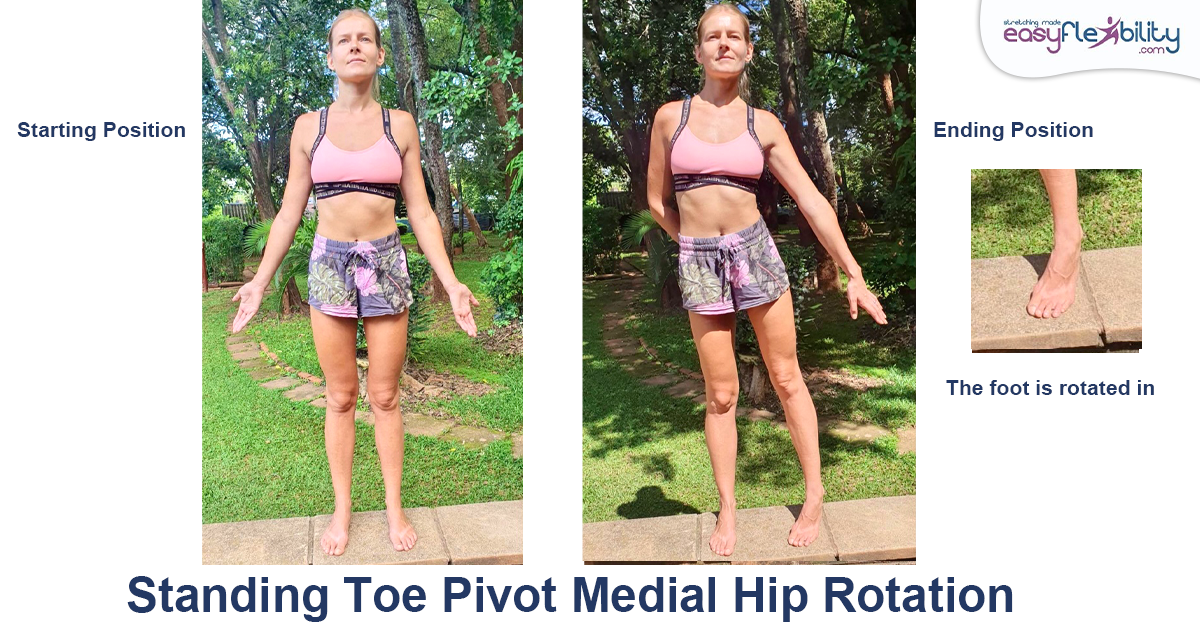
5 Standing Toe Pivot Medial Hip Rotation
- Stand vertical with your feet a foot apart from each other
- Lift your heel
- Keep your toes on the floor and rotate the leg in by bringing your heel out
This is a simple inward rotation pivoting on the toes instead of the heel mobility technique.
You will notice that the range of motion on a lateral rotation is greater than on the medial rotation. Here you will see a comparative range of motion for the medial and lateral rotation.
Flexed Hip Position Mobility Exercises
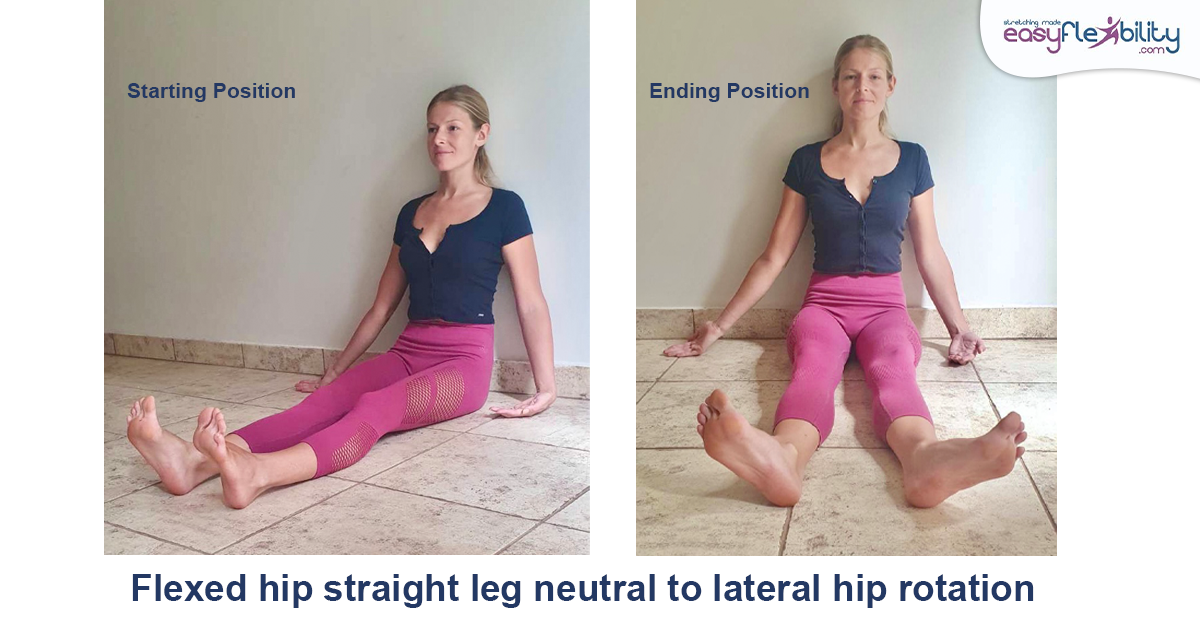
6 Flexed hip straight leg neutral to lateral hip rotation
Next, let's do the hip rotation exercises in the flexed hip position.
- Sit on the floor (or a yoga mat)
- Both legs straight in front of you
- Keep toes up
- Drop your toes out to the sides
- Keep your heels together
- And bring them back to the starting position

7 Flexed hip straight leg neutral to medial hip rotation
- Sit on the floor (or a yoga mat)
- Both legs straight in front of you
- Keep toes up
- Bring your toes towards each other by rotating your legs inward
- Keep your heels a foot a part from each other
- And bring them back to the starting position
This is your medial rotation of the hip.
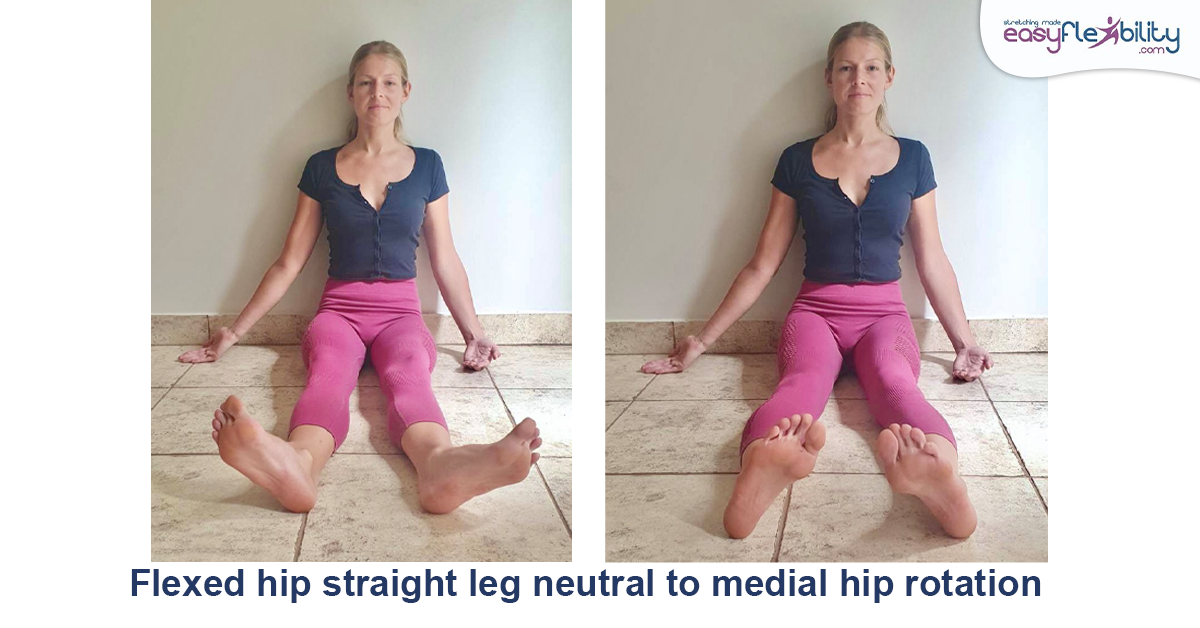
8 Flexed hip combined inward and outward hip rotation
And you can combine the two by rotating your toes out and then rotating your toes
in.
in.
- Sit on the floor (or a yoga mat)
- Both legs straight in front of you
- Keep toes up
- Keep your heels 2 feet apart from each other
- Rotate your toes out
- And now rotate toes in

9. Sitting Flexed Hip Inward Rotation with bent knees
You can do the same thing with your knees bent.
- Get a hold of a sturdy chair
- Sit in a chair
- Lift your feet off the floor a little bit so that they are hovering above the floor
- Without moving your thighs medially rotate your hips by bringing your feet out to the sides.
This is your internal rotation. You can do this one leg at a time, or with both legs at a time.
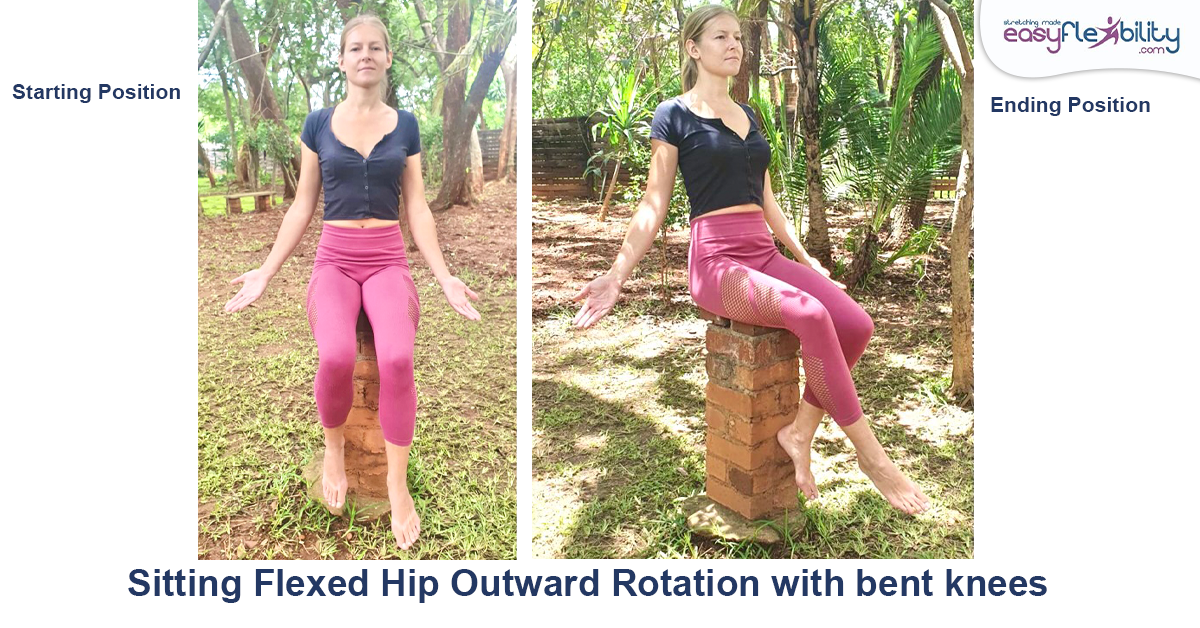
10. Sitting Flexed Hip Outward Rotation with bent knees
- Get a hold of a sturdy chair
- Sit in a chair
- Lift your feet off the floor a little bit so that they are hovering above the floor
- Without moving your thighs laterally rotate your hips by bringing your feet inward
This is your outward rotation. You can do this one leg at a time, or with both legs at a time.

11 Supine Bent Hip Outward Hip Rotation
These exercises can also be done lying on the back. To do this with straight
legs:
legs:
- Lie down on your back
- Bring your feet up to the ceiling
- Keep your heels together
- Rotate your hips out by bringing your toes apart
- And come back to the starting position
This is your lateral rotation. You can do this one leg at a time, or with both legs as demonstrated.
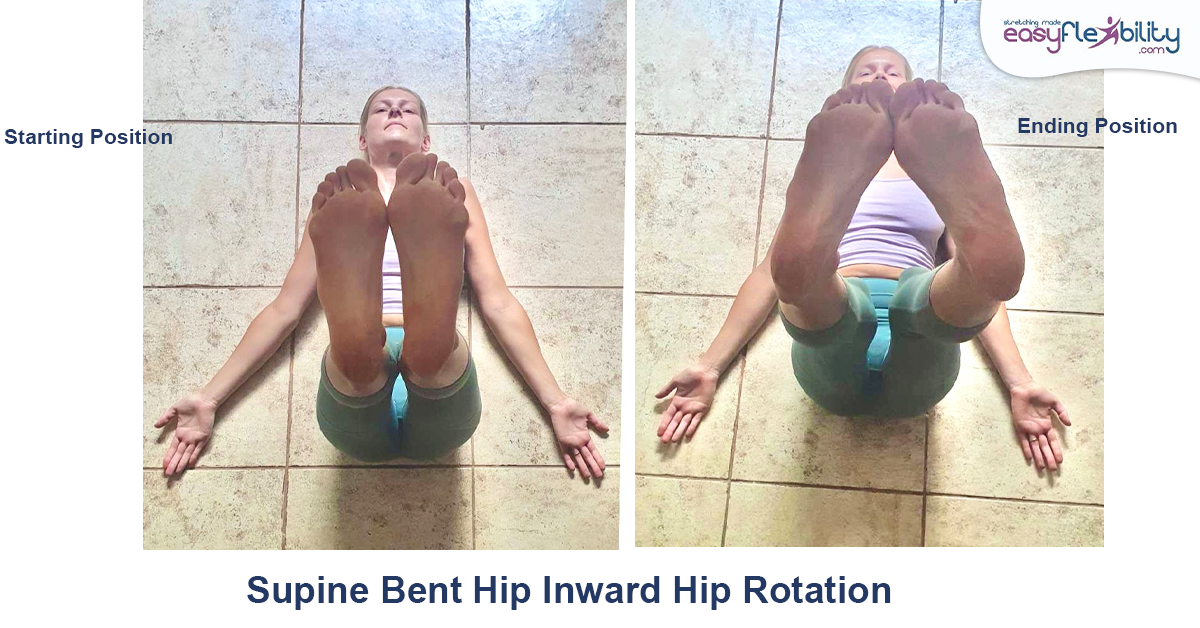
12 Supine Bent Hip Inward Hip Rotation
These exercises can also be done lying on the back. To do this with straight
legs:
legs:
- Lie down on your back
- Bring your feet up to the ceiling
- Keep your heels together
- Rotate your hips in by bringing your toes toward each other.
- And come back to the starting position
This is your medial rotation. You can do this one leg at a time, or with both legs as demonstrated.

13 Supine Flexed hip, flexed knee, Medial Rotation
To do this with bent legs.
- Lie down on your back
- Bend your knees while you are on your back
- Keep your knees together
- Bring your feet apart from each other.
This is your internal rotation.
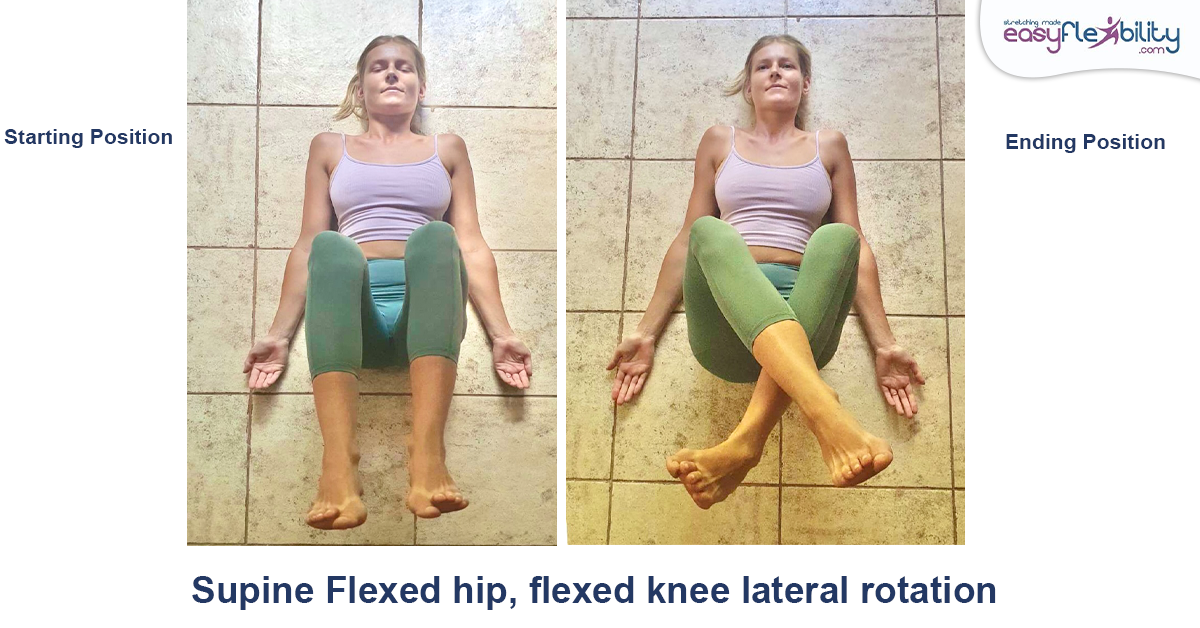
14 Supine Flexed hip, flexed knee lateral rotation
- Lay down on your back
- Flex your hips to 90 degree angle
- Flex your knees to 90 degree angle
- Now criss cross your legs at the shin level thus performing a lateral rotation.
- And come back to the starting position.
This is your lateral rotation on the back with bent knees. Or you can do one side at a time by bringing the leg across the midline (an imaginary vertical line that runs down the center of your body) while the other leg is flat on the floor, creating an external rotation of the hip.
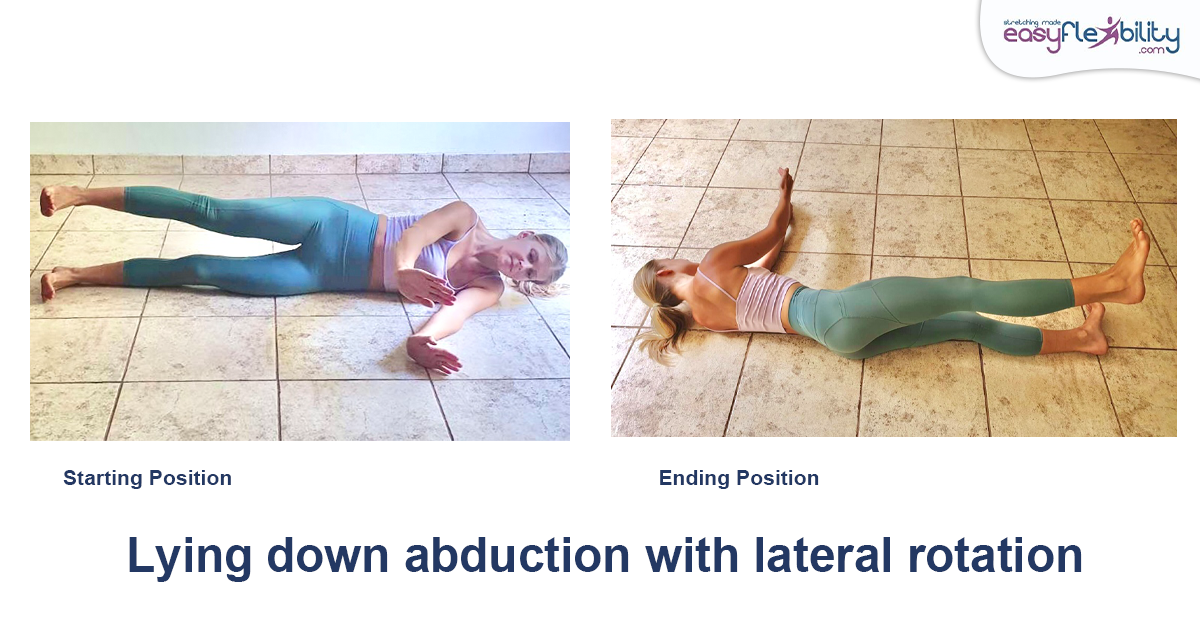
15 Lying down abduction with lateral rotation
To do rotation together with abduction.
- Lie down on your side.
- Lift one leg up to the side so that the leg is up in the air perpendicular to the floor
- And perform a lateral rotation so that your toes are pointing in the direction of your head. (Because abduction without lateral rotation is not possible past 45 degrees)
This is your lateral rotation.
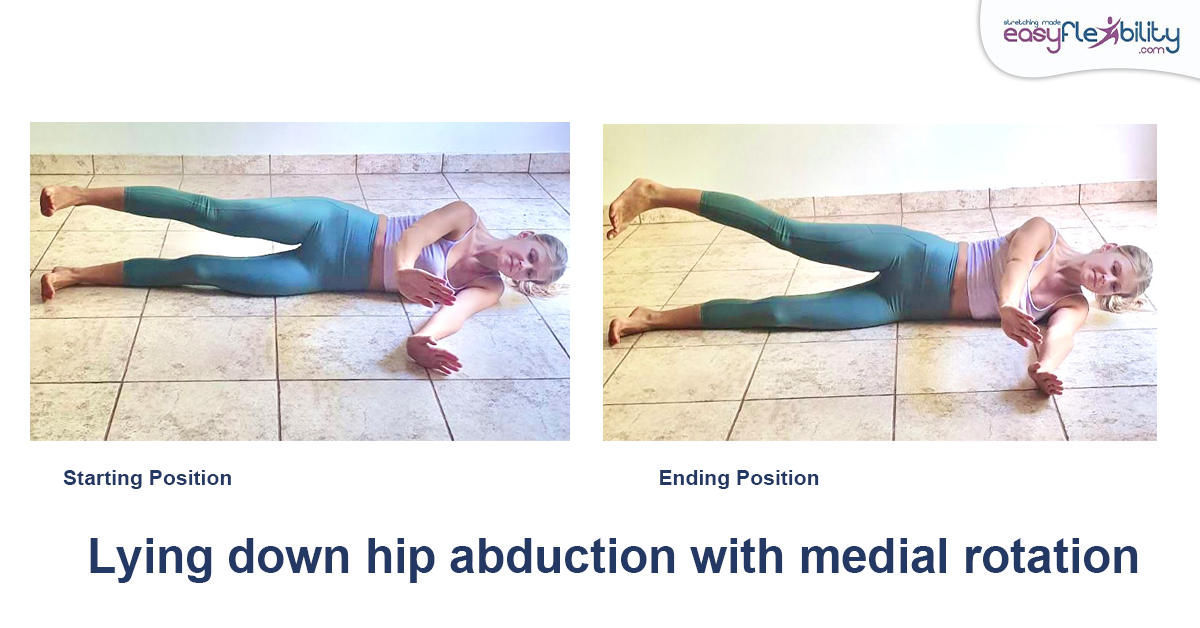
16 Lying down hip abduction with medial rotation
To do rotation together with abduction.
- Lie down on your side
- Lift one leg up to the ceiling as far as you can without turning the leg out
- Keep the leg up in the air and turn the toes inward in the direction of the floor
- And come back to the starting position.
This is your medial rotation in the hip abducted position.
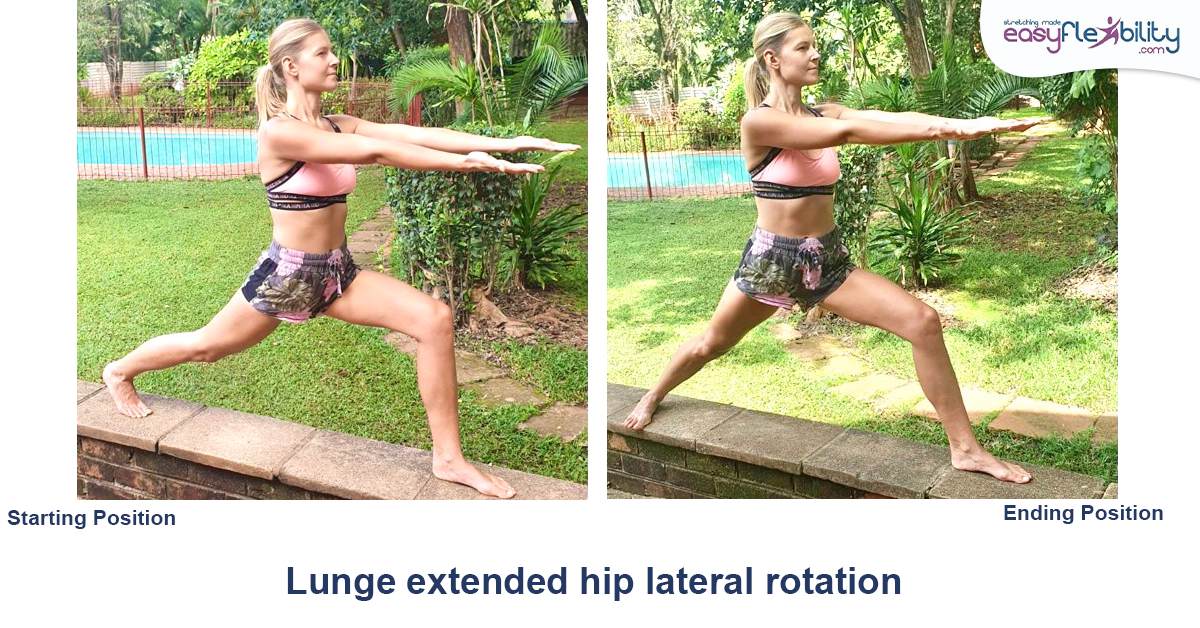
17 Lunge extended hip lateral rotation
If you are feeling adventurous and you want to take your hip rotation in the hip extended position to the next level you can do the following exercise:
- Get into a lunge position
- With the back leg straight
- Keeping the back leg straight perform the lateral rotation of the hip by placing the inner border of your foot on the floor.
- And come back to the starting position.
This would be your lateral rotation when the middle border is on the floor.

18 Lunge extended hip medial rotation
- Get into a lunge position
- With the back leg straight
- Keeping the back leg straight perform the medial rotation of the hip by placing the outer border of your foot on the floor.
- And come back to the starting position.
This would be your medial rotation when the outer border of the foot is on the floor.
Strength Exercises
Next, let's explore the strength exercises that will strengthen the lateral and medial
rotators of your hip. An important note here is that in actual sports applications, very often the hip rotation is combined together with other actions at the same time.
For example, if you think of the soccer kick with the inside of your foot, you're going to have the lateral rotation together with the flexion of the hip. If you think of the martial arts sidekick, you will have hip medial rotation together with extension and/or abduction, depending on how the kick is performed. And if you think of dance, you might have flexion or abduction of the hip together with lateral rotation like in Developpe.
The strength exercises for the rotation are best performed with cables or resistance bands. In some cases, ankle weights are also a good option.
rotators of your hip. An important note here is that in actual sports applications, very often the hip rotation is combined together with other actions at the same time.
For example, if you think of the soccer kick with the inside of your foot, you're going to have the lateral rotation together with the flexion of the hip. If you think of the martial arts sidekick, you will have hip medial rotation together with extension and/or abduction, depending on how the kick is performed. And if you think of dance, you might have flexion or abduction of the hip together with lateral rotation like in Developpe.
The strength exercises for the rotation are best performed with cables or resistance bands. In some cases, ankle weights are also a good option.
If you're practicing for specific sports skill where you want stabilization from other muscles while the hip rotates, then an exercise such as sit in hip rotation would be good for you. Below you will see the demonstration of sitting hip rotation with resistance bands.
Doing this for purely isolation purposes, keeping the heel on the floor allows the weight of the body instead of the stabilizing muscles to keep the leg in place. So if you want to isolate the rotation movement with a bent knee, performing this exercise on the floor would be better for hip rotation isolation.
Doing this for purely isolation purposes, keeping the heel on the floor allows the weight of the body instead of the stabilizing muscles to keep the leg in place. So if you want to isolate the rotation movement with a bent knee, performing this exercise on the floor would be better for hip rotation isolation.

19- Isolated medial rotation with ankle weights
- Place an ankle weight on your top foot (if you're laying on your right side down, your left side is your top)This can also be done with resistance bands, but it's more challenging to do
- Lie down on the floor on your side keeping your legs and body in straight line
- Bend your top knee to 90 degrees and rotate the leg in by lifting your foot toward the ceiling.
- Notice the range of motion in this exercise will be small unless you have hypermobile joints.
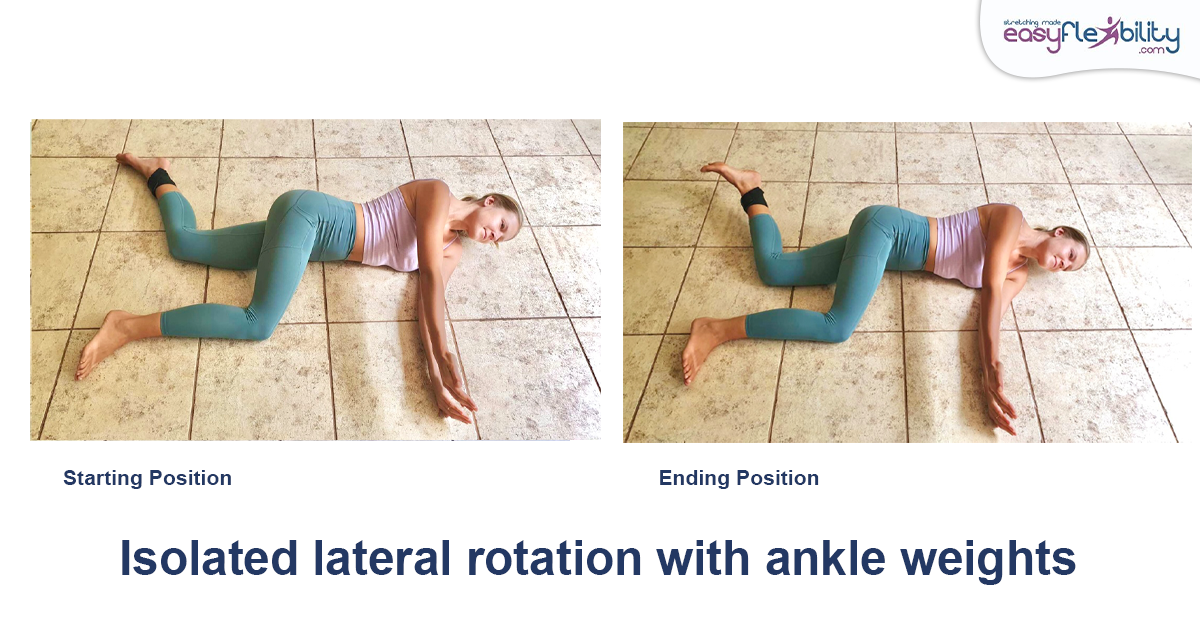
20- Isolated lateral rotation with ankle weights
- Place an ankle weight on your bottom foot (if you're laying on your right side down, your right foot is your bottom foot and your left foot is your top foot) This can also be done with resistance bands, but it's more challenging to do
- Lie down on the floor on your side keeping your legs and body in straight line
- Bend your bottom knee to 90 degrees, flex your top knee to get it out of the way by bringing your knee a little bit forward and across the floor and rotate the bottom leg outward by lifting your foot off the floor.
The floor functions as a stabilizer in these exercises and the hip joint movement becomes focused on the rotation, both medial and lateral.

About the Author:
Paul Zaichik is an Exercise Science Expert, author of multitude of books, and the creator of Zaichik Stretching Technique (formely known as Kinesiological Stretching Technique). His speciality is flexibility training as well as body weight conditioning. His innovative method is designed to have maximum carry over into specific athletic techniques. Paul is the author of books and DVD’s on the topic of flexibility, martial arts and bodyweight training. Over the years, Paul Zaichik has worked with a variety of individuals including athletes, entertainers, and military personnel. His ElasticSteel Method of Athletic Conditioning programs, EasyFlexibility Programs and Zaichik Stretching Techniques are used world wide by both professional and amateurs with great success.
© ElasticSteel Corp., EasyFlexibility, Paul Zaichik, et. El., 2023. No part of the materials available through ElasticSteel.com, EasyFlexiiblity.com, site may be copied, photocopied, reproduced, translated or reduced to any electronic medium or machine-readable form, in whole or in part, without prior written consent of Paul Zaichik EasyFlexibility.com, Elasticsteel.com.. Any other reproduction in any form without the permission of Paul Zaichik EasyFlexibility.com, Elasticsteel.com is prohibited. All materials contained on this site are protected by United States copyright law and may not be reproduced, distributed, transmitted, displayed, published or broadcast without the prior written permission of Paul Zaichik, EasyFlexibility.com, Elasticsteel.com.
Share this post
0 comment


